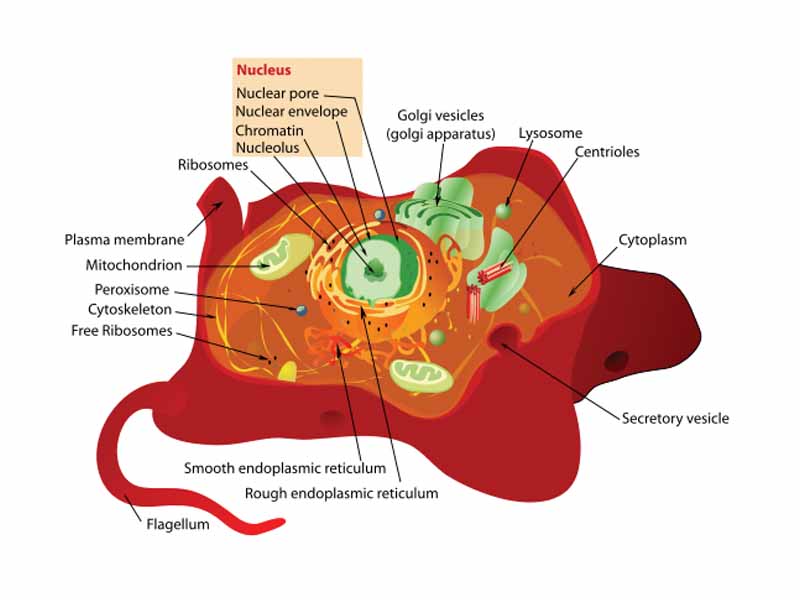Interdisciplinary Note (7 of 25)
Many of the activities of eukaryotic cells are carried out by functional subassemblies known as organelles. Organelles are complex, ordered arrays of macromolecules. Every cell typically contains hundreds of different kinds of macromolecules that function together to generate the behavior of the cell. Don't lose sight of the molecular basis of organelle function. Whether you are conceptualizing endoplasmic reticula, the Golgi apparatus, a centriole, or a ribosome, always strive to include the molecular scale in your conceptual picture. Strive to integrate with your understanding of cell biology with basic chemistry.
The nucleus houses the chromosomes which contain the genes, which direct protein synthesis. Eukaryotic chromosomes are composed of chromatin, a composite of protein and DNA. Within each chromosome a single strand of DNA is tightly bound to proteins called histones. The basic central dogma of gene expression begins with the transcription of DNA into mRNA. In eukaryotes the mRNA moves from the nucleus into the cytoplasm where translation occurs either free in the cytoplasm or on the rough ER. A ribosome only binds to the rough ER once it begins to synthesize a protein marked with a signal sequence, an address tag, which destines for sorting within the endomembrane system. The membrane of the rough endoplasmic reticulum is continuous with the outer layer of the nuclear envelope.
Thought previously to be organelles, then nucleoli appear in the nucleus just after cell division. Nucleoli represent a high local concentration of the precursors of ribosomes, associated with certain chromosomal loci. Nucleoli disappear during late prophase of mitosis.
